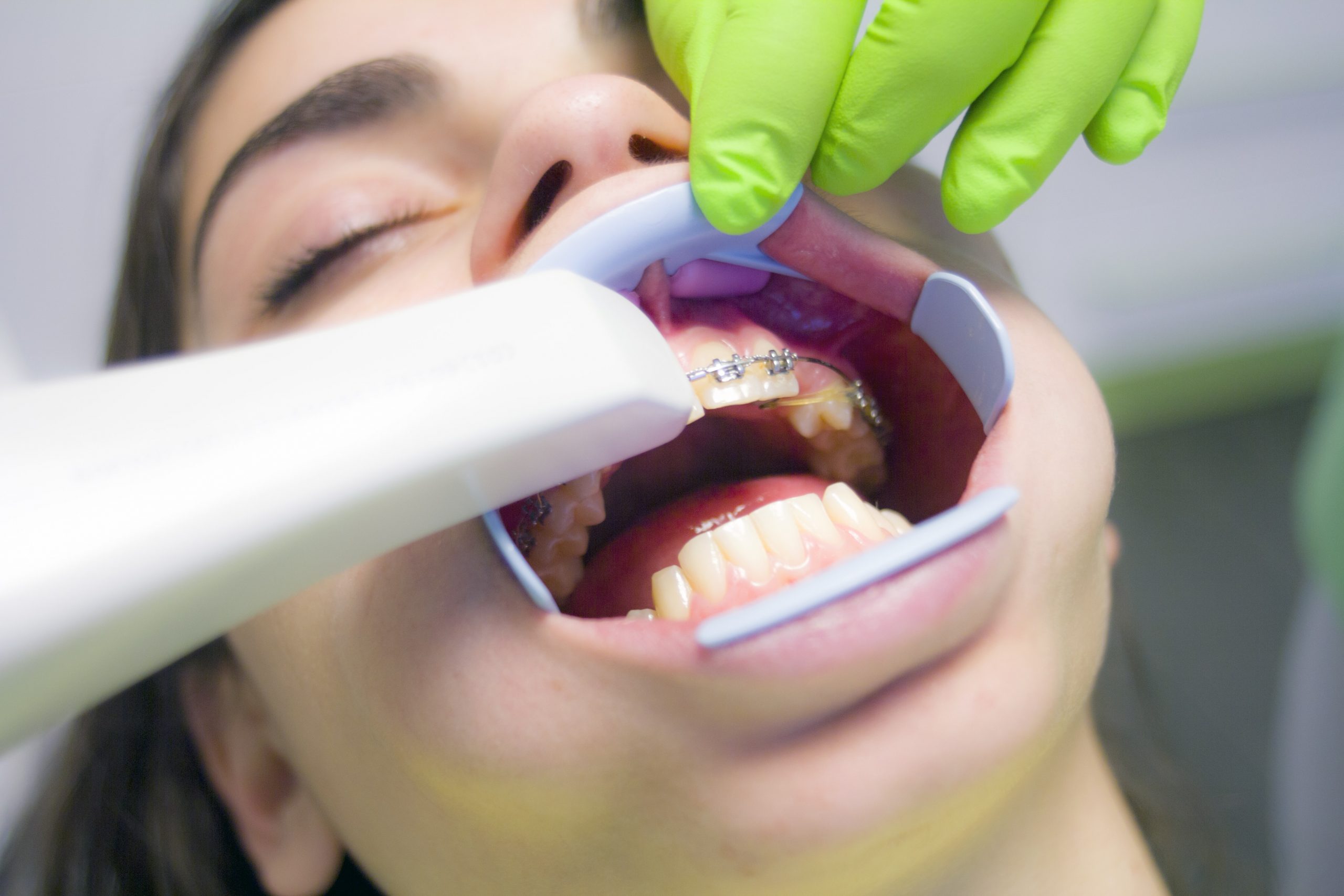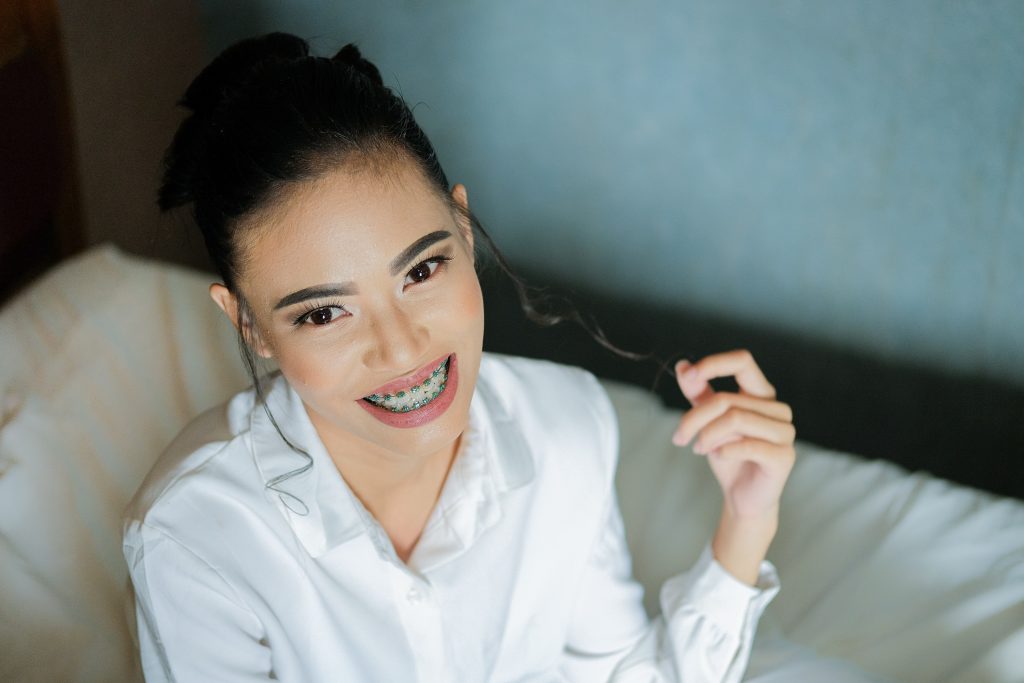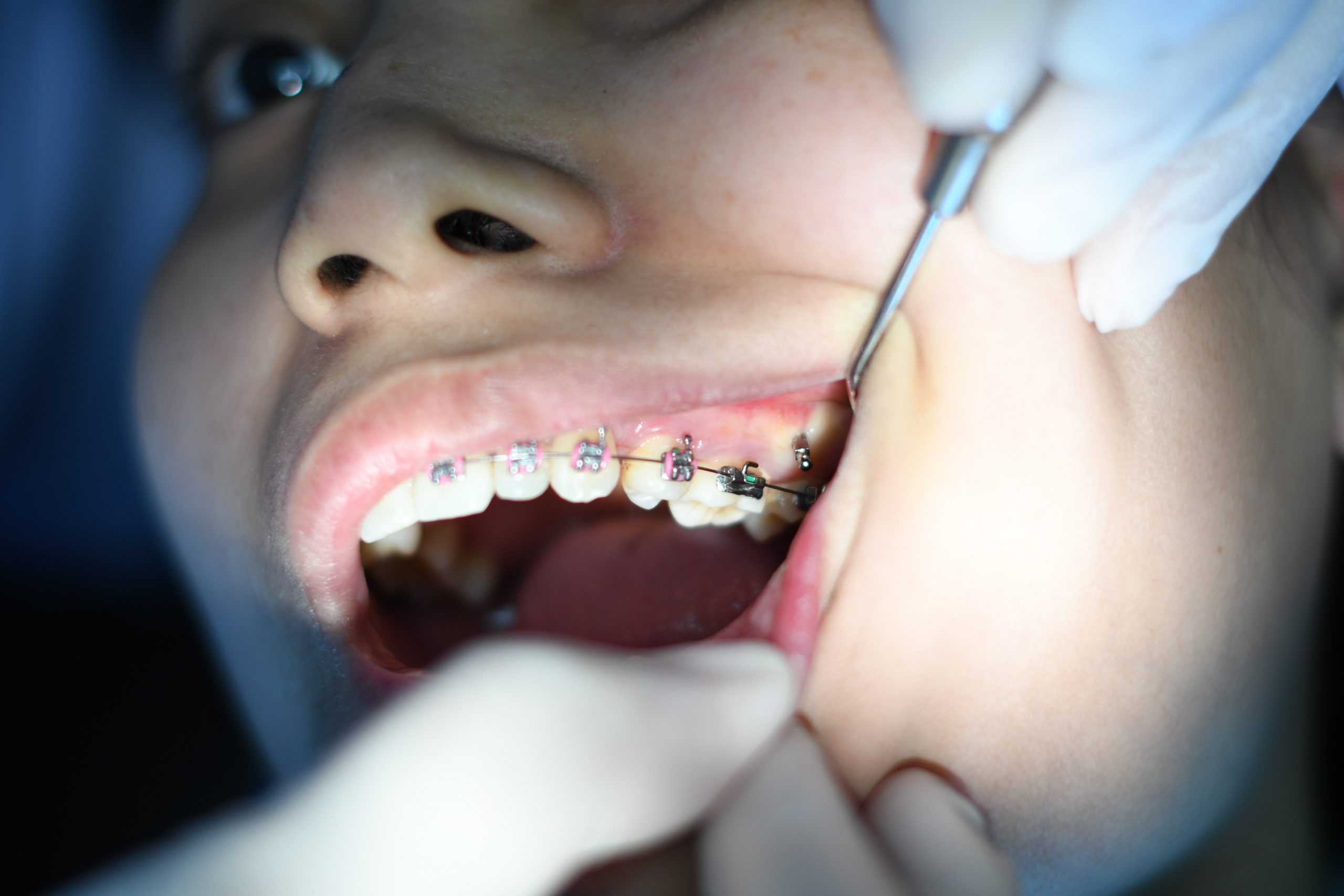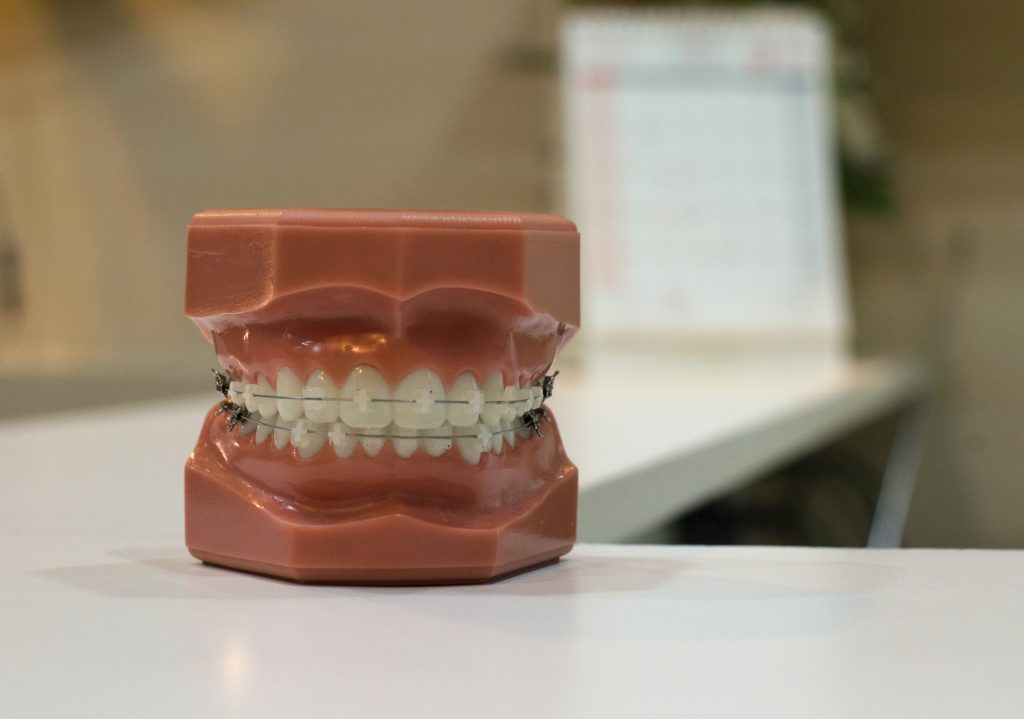“How can you force yourself to go to a dentist – orthodontist to correct a bite with the help of a bracket system !? After all, they are visible to everyone around! I will experience great discomfort! “. They will be helped by invisible, hidden braces installed in our clinic.
What are invisible braces and how do they differ from conventional bracket systems ? Their name speaks for itself – they are imperceptible to others, thereby not violating the usual way of life. Let’s talk in more detail about these constructions.
Invisible braces are used to correct the position of the teeth, in case of malocclusion in general. The invisible bracket-system consists of a metal arch made of a nickel-titanium alloy and elements that are fixed on the teeth. These elements can be ceramic, sapphire. They are fixed to the tooth with a special glue.
The process of preparing teeth for the installation of an invisible bracket system consists of the treatment of all teeth, professional oral hygiene, during which the doctor will remove soft dental plaque and tartar .
Then the orthodontist takes impressions from the jaws and sends them to the laboratory. Then, using the finished models, he calculates the direction in which the teeth will be moved. The whole process takes 2 to 3 days. What is the advantage of our clinic.
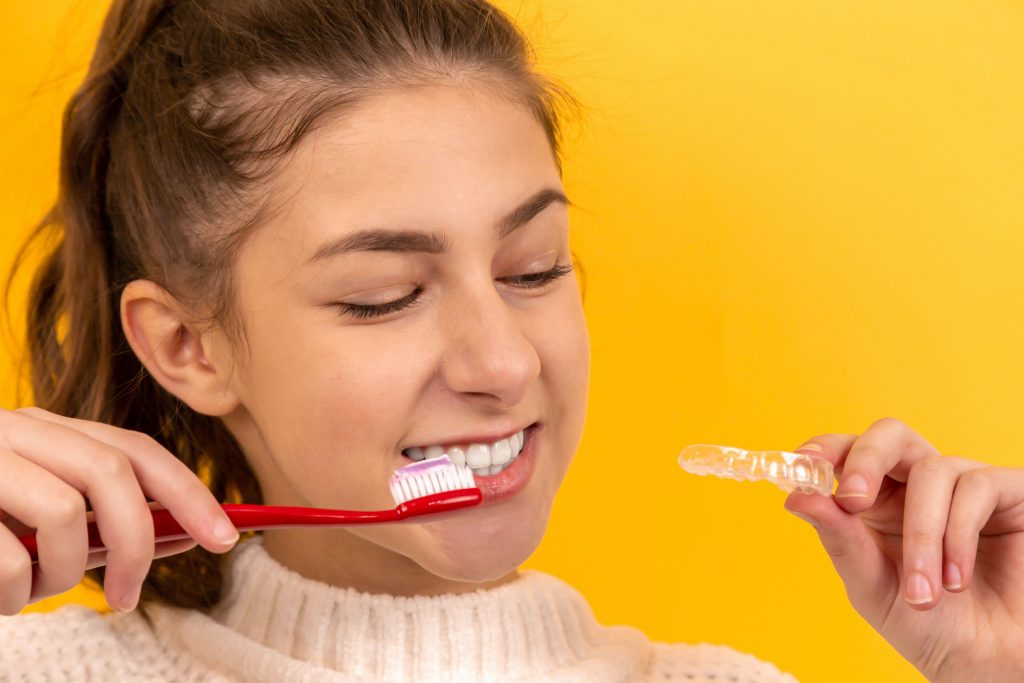
Types of invisible braces
Several types of invisible braces are used to correct the occlusion. These are ceramic braces, the fixing elements of which are similar in color to the enamel of the teeth. They have both a number of advantages – this is relative invisibility, strength, and a number of disadvantages. The patient should carefully follow all the recommendations of the orthodontist. This type of braces – systems can easily chip off, requires a certain diet, excluding all coloring products. Also, patients who have a bad habit – smoking, should give it up, since cigarette smoke can stain ceramic elements.
Sapphire braces are the most expensive type of non-removable hardware orthodontic treatment. Artificially grown fixing sapphire elements are invisible on the teeth and have the ability to sparkle when exposed to light.
There are also lingual braces that are fixed on the inner surface of the teeth. Their fixing elements have a flat shape and a special fastening that allows you to achieve better adhesion to the tooth tissues. This is the most comfortable type of bracket system in terms of aesthetics, the treatment is invisible to others. But there are a number of disadvantages, this is a long period of adaptation and speech impairment.
Ceramic
One of the most popular relatively invisible braces – systems are ceramic braces. Relatively invisible because the retaining elements on the teeth are made of ceramic – an opaque material, but the color is matched to the color of natural teeth, which makes them invisible to others. And the arc remains metallic.
Ceramic braces have a number of advantages, such as: they do not change color during long-term wear if you follow an appropriate diet that excludes coloring products. There is practically no period of pain adaptation to them, they do not interfere with eating and communicating with other people.
Disadvantages of ceramic braces: they cannot be reused when they are released. They can easily chip off if the orthodontist’s recommendations are not followed, which will require replacing them with new ones.
In care, ceramic braces do not differ from metal ones; special orthodontic brushes, brushes, pastes are also used.
Sapphire
Sapphire designs will probably be of interest to more women and girls who are worried about their appearance during long-term orthodontic treatment, since they are made of transparent materials, and the metal arch has been replaced by a transparent ceramic arch. This makes them completely invisible. And when the sun hits them, they have an unusually beautiful shine.
Sapphire braces are made from cultured sapphire. They are completely hypoallergenic, which makes it possible to use them in patients with a history of ging.
Sapphire braces are expensive, which is their main disadvantage. Also, treatment with these systems has a fairly long period. According to their characteristics, sapphire braces have increased fragility, which makes patients take good care of this orthodontic appliance.
In case of serious malocclusion, metal braces are preferred .
The main manufacturers of sapphire braces are Damon Clear, Miso, Radiance, Pure.
Lingual
There is another type of invisible braces – lingual braces. Their peculiarity lies in the fact that they are fixed to the inner side of the teeth and are the most difficult structure for fixation, but our orthodontists successfully cope with this task.
The fixing element has a flat shape, a special attachment to the tooth, which allows you to achieve the greatest adhesion.
Lingual braces are completely invisible to others, which allows the patient to feel comfortable.
Along with this, lingual braces have a number of disadvantages. The patient goes through a long period of adaptation, his speech is impaired.
Treatment with lingual braces – systems allows you to constantly monitor the movement of teeth, since there are no external structures on the tooth and nothing interferes with observing the process of teeth movement.
Lingual braces practically do not cause gum inflammation.
In some clinical situations, the duration of treatment can be reduced by 5-6 months compared to metal braces.
The cost of invisible braces
The cost of invisible braces consists mainly of the cost of fixing elements. So sapphire braces have the highest cost at the moment. This is due to their expensive production.
Ceramic braces in our clinic cost from 70 thousand rubles per jaw.
Lingual braces are also ordered individually, which affects their price. A high-level orthodontist works in our clinic. The qualifications allow her to install lingual braces with excellent results.
Lingual braces – systems are much more expensive. Invisible braces are made to order. Which is a small drawback, since modern systems are made in Europe, America, etc., the patient will have to wait until his individual braces are made and delivered.
In some cases, we consider treatment for promotions, we provide discounts. All these issues are resolved on an individual basis.
Remember that invisible braces are only used on permanent teeth. In a milk bite, standard metal braces are used.




